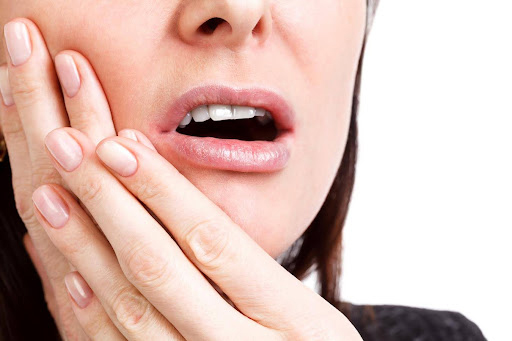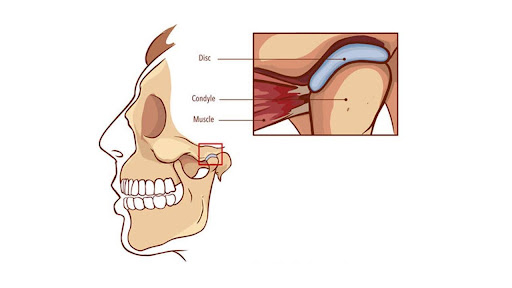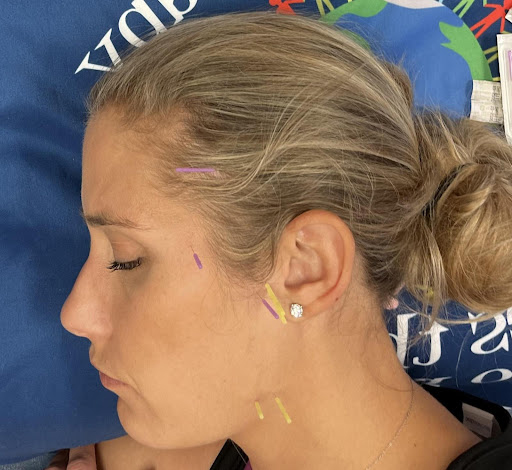Jaw Pain, What is it and How can Physical Therapy FIX it?

If you have pain in your jaw or feel clicking and catching when you are opening your mouth, or when you are chewing, or have pain in your face and around your ear, you may have a condition called Temporomandibular Joint Disorder (TMD). Keep reading to see if you have TMD and learn how physical therapy can help you!
What Is TMJ and What Is TMJ disorder?
The temporomandibular joint (TMJ) is the joint that connects your jawbone to your skull. Specifically, the TMJ functions like a sliding hinge on each side of your face, and it, along with the surrounding muscles, controls your jaw movements. Furthermore, TMD refers to a group of musculoskeletal and neuromuscular conditions that involve not only the muscles of mastication (chewing) but also the TMJ and associated structures.

What Causes TMD?
A combination of factors can cause TMD: poor posture, arthritis, jaw injury, bruxism (habitual, involuntary clenching or grinding of the teeth), trauma, dental procedures (even prolonged mouth opening), and medical condition such as fibromyalgia or irritable bowel syndrome, among others.
How Do I Know If I Have TMJ disorder?
TMD may present with different symptoms including but not limited to:
- Pain and soreness in one or both TMJs
- Aching pain around your ear
- Pain spreading behind the eyes, in the face, shoulder, neck, and/or back
- Popping, clicking, or locking of the jaw
- Difficulty or pain with chewing
- Spasm and aching in your facial muscles
- Difficulty opening or closing your mouth
- Neck pain
- Headaches
- Pain with talking, yawning, and eating
A comprehensive examination is needed to diagnose TMD and rule out other causes of jaw pain. First, your physical therapist will assess your jaw movement to measure the range of motion and identify any possible deviations during the opening and closing of your mouth. Additionally, your physical therapist will palpate the joint and surrounding tissue to evaluate tenderness, spasm, and joint alignment. Furthermore, the evaluation is not limited to your jaw; it will include a complete assessment of your neck and a postural analysis, as these factors can also play a significant role in TMJ disorders..
How Does Physical Therapy Help with Fixing My TMJ?

There are various treatment techniques that your physical therapist can use to treat your TMD. Let’s highlight some of these treatment options:
- TMJ Mobilization: Extraoral (outside of the mouth) and intraoral (inside the mouth) TMJ mobilization techniques can be utilized to improve TMJ mobility and intra-articular disc sliding, which is crucial for a healthy TMJ function.
- Soft Tissue Release and Massage: your therapist may utilize different techniques to decrease pain, spasms, and stiffness in the soft tissue and musculature of your face, neck, and upper back.
- Dry Needling: Dry needling is an effective and highly precise tool that can directly reach the TMJ and the surrounding tissue. Dry needling has local effects by increasing blood flow, releasing local pain inhibitors, and facilitating muscle relaxation. It also impacts the nervous system to help control pain centrally. Dry needling is one of the few methods that can manually release the jaw disc, which often becomes impinged due to chronic tightness. Click here to read more about dry needling.
- Cervical Mobilization and Manipulation: These are highly specific techniques designed to restore normal mobility in the neck. These techniques also send a message to the nervous system to improve movement quality. They help control pain and stiffness by resetting the joint’s stretch receptors and normalizing tension in the surrounding tissue. Click here to read more about mobilization and manipulation.
- Postural Training: Poor posture can be one of the main factors if not the primary cause impacting your TMJ. Your physical therapist can assess your posture and determine if any postural impairment, such as forward head posture, rounded shoulders, increased kyphosis, scoliosis, etc., exist and need to be addressed as a part of your treatment. Click here to read about the importance of proper posture.
- Therapeutic Exercises: Jaw exercises, along with cervical and scapular exercises, are important components of recovery from TMD. Your physical therapist will prescribe personalized exercises tailored to your body and specific needs.
What Is Next?
If you want a highly personalized and skilled evaluation and treatment session, we can help identify the source of your pain and discomfort. You will experience a one-on-one physical therapy session tailored to your needs. This session will focus on overcoming pain in your TMJ, jaw, face, neck, head, and more. Click here to schedule an appointment with one of our doctors of physical therapy at Symmetry Physical Therapy in Downtown Miami!
Interested in reading more research about TMJ Pain? Check out our Webpage and Research Page
Come see us at Symmetry Physical Therapy, located in the Downtown Miami/Brickell area. We will conduct an in-depth assessment to address your TMJ pain. Our tailored treatment strategies will help you succeed in your recovery.
Feel free to give us a call at (305) 331 2277 to schedule an appointment.
